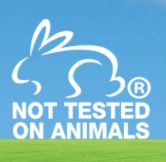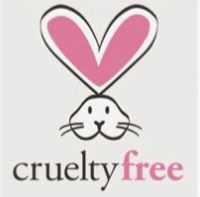Animal welfare falls under state and territory jurisdiction in Australia, which means there is no, one uniform law across the country regarding animal welfare. For the interested reader, the relevant legislation for each state and territory is provided in the bibliography at the end of this article. Because animal cruelty falls outside of the Federal Government’s jurisdiction, it is left to non-government organisations (NGOs) to compile a register of companies who do and do not test their products on animals. However, as multiple national and international companies offer certification to various standards, compassionate consumers must inform themselves to determine if a cruelty free certified product meets their personal ethical standards. This article will provide a guide to Australian certification of cruelty free products.
The two Australian NGOS which certify companies as being cruelty free are Choose Cruelty Free (CCF) and People for the Ethical Treatment of Animals (PETA) Australia. A separate list of cosmetic and household cleaning companies which are not cruelty free is maintained by Animals Australia.
Both CCF and PETA Australia offer voluntary accreditation for cosmetic, toiletries and cleaning product manufacturers. Certified companies may use either the CCF or PETA Australia ‘not tested on animals’ logo on their products. CCF and PETA Australia both publish their lists of accredited companies which include information about whether each company is vegan friendly or vegetarian friendly (Choose Cruelty Free 2018 and PETA Australia 2018). CCF publishes its list in both softcopy and hardcopy form, while PETA only publishes its list digitally. Additionally, both companies have developed free apps which provide information about cruelty free products. The Choose Cruelty Free app (by CCF) and the Bunny Free app (by Peta Australia) are available for download via the App Store and Google Play.

To receive CCF accreditation, a company must fill out a questionnaire regarding the manufacturing and testing practices, sign a legally binding contract and pay an annual AUD$100 licensing fee (Choose Cruelty Free 2018). This ensures that the company can use CCF’s ‘not testing on animals’ rabbit logo on their products can be included in the online and hardcopy list of cruelty free products.
While this is an encouraging step towards ensuring animal testing does not occur, CCF is a not-for-profit company which largely relies on volunteers to administer the accreditation process (Choose Cruelty Free 2018). This means that the organisation’s resources are limited and they rely somewhat on the honesty system. While companies are required to sign a legally binding contract stating that they do not engage in animal testing, they are not required to allow a CCF inspector onto their premises to verify this claim. Furthermore, if a company were to be found in breach of their contract, CCF could rescind the contract, but it is unlikely that they would have the resources to pursue legal action.

The second company which offers cruelty free certification in Australia is PETA Australia. The majority of the companies which PETA Australia certifies are also certified by CCF which means that a company may use either the PETA Australia or CCF cruelty free rabbit logo on their products (PETA Australia 2018). To earn PETA accreditation, a company must fill out a ‘short’ survey (PETA Australia). There is no mention of this contract being legally binding on the PETA Australia website. Again, this certification system relies largely on the honesty system and self-reporting to determine if a company is cruelty free. Furthermore, because both companies have similar cruelty free logos, they may inversely affect each other’s credibility as consumers may not be certain about each logo’s provenance. The matter is further complicated by the fact that a number of other organisations also product cruelty free and vegan friendly logos (Trusted Clothes 2016). Unless consumers have researched the significance of all of these logos, the prevalence of so many certifications may cause more confusion than clarity.
Because accreditation is voluntary, there are some companies which may be cruelty free but do not appear on any of these lists. For example, the skincare brand Sukin states that it is vegan friendly on its packaging but is not included on the CCF or PETA Australia list as of 12 March 2018. Furthermore, there are some companies which have accreditation but do not state this on their packaging. For example, the cosmetic company NYX Professional Makeup is certified by PETA Australia but it does not state this on its packaging as of 12 March 2018.
To further complicate the matter, ‘not tested on animals’ does not mean that the product does not contain animal products. Therefore, a company which uses either the CCF or PETA Australia logo may contain animal produce which were sourced unethically. Likewise, ‘vegan friendly’ does not mean that the product was not tested on animals. Both the CCF and Peta Australia lists contain a guide to a list of acronyms which provide further information about the ingredients used by the companies their certify.
As accreditation is voluntary, and the cruelty free lists are not exhaustive, the best way to verify if a company is cruelty free is to cross check its packaging with both databases. If the company states that it does not test on animals on its packaging or is listed on either the CCF or PETA Australia cruelty free registry, consumers can be reasonably confident that the product was not tested on animals. Acronyms such as V or VF can provide further information about the specific contents of that product.
Australia recently introduced a nation-wide country of origin labeling system for food which allows consumers to see where a product’s ingredients were sourced and where it was manufactured (Commonwealth of Australia 2016). This allows consumers to make informed decisions regarding their food purchases. A similar nation-wide labeling system regarding the ethical treatment of animals would help consumers choose cruelty free cosmetics and cleaning products. Until such a system is devised, the onus is on consumers to familiarise themselves with Australia’s fragmented cruelty free accreditation systems.
Bibliography
Agriculture Victoria 2017, Prevention of Cruelty to Animals Act 1986, Prevention of Cruelty to Animals Legislation, viewed 11 March 2018, < http://agriculture.vic.gov.au/agriculture/animal-health-and-welfare/animal-welfare/animal-welfare-legislation/prevention-of-cruelty-to-animals-legislation>
Animals Australia 2018, Animal Testing Facts: Which Companies Still Allow Testing in Animals?, Animals Australia, viewed 9 March 2018, <https://www.peta.org.au/living/cruelty-free-cosmetics-makeup-australia/>
AustLii n.d., Animal Care and Protection Act 2001, Queensland Consolidated Acts, viewed 11 March 2018, < http://www8.austlii.edu.au/cgi-bin/viewdb/au/legis/qld/consol_act/acapa2001229/>
Choose Cruelty Free 2018, About Choose Cruelty Free (CCF), Choose Cruelty Free, viewed 9 March 2018, https://choosecrueltyfree.org.au/about-ccf/
Commonwealth of Australia 2016, Australia’s food labels are getting clearer, Australian Government, viewed 12 March 2018, < http://www.foodlabels.industry.gov.au/>
Government of NSW 2013, Prevention of Cruelty to Animals Act 1979 no. 200, NSW Legislation, viewed 10 March 2018, <https://www.legislation.nsw.gov.au/inforce/af92116f-7d2d-60a9-f731-9dacdd705d05/1979-200.pdf>
Government of South Australia 2018, Animal Welfare Act 1985, South Australian Legislation, viewed 11 March 2018, < https://www.legislation.sa.gov.au/LZ/C/A/Animal%20Welfare%20Act%201985.aspx>
Government of Western Australia 2016, Animal Welfare Act 2002, State Law Publisher, viewed 11 March 2018, < https://www.slp.wa.gov.au/pco/prod/filestore.nsf/FileURL/mrdoc_29410.pdf/$FILE/Animal%20Welfare%20Act%202002%20-%20%5B01-h0-01%5D.pdf?OpenElement>
Northern Territory Government n.d., Animal Welfare Act 2017, Northern Territory Legislation, viewed 11 March 2018, < https://legislation.nt.gov.au/Legislation/ANIMAL-WELFARE-ACT>
Oxford University Press 2018a, Definition of Cruelty in English:, English Oxford Living Dictionaries, viewed 10 March 2018, <https://en.oxforddictionaries.com/definition/cruelty>
Oxford University Press 2018b, Ill treatment, English Oxford Living Dictionaries, viewed 11 March 2018, < https://en.oxforddictionaries.com/definition/ill_treatment>
PETA Australia 2018, Cruelty Free Beauty Products List 2018, PETA Australia, viewed 9 March 2018, https://www.peta.org.au/living/cruelty-free-cosmetics-makeup-australia/
Tasmanian Government 2017, Animal Welfare Act 1993, Tasmanian Legislation, viewed 11 March 2018, viewed < https://www.legislation.tas.gov.au/view/html/inforce/current/act-1993-063>
Trusted Clothes 2016, Vegan & cruelty free logo guide, Trusted Clothes, viewed 12 March 2018, < https://www.trustedclothes.com/blog/2016/06/17/vegan-cruelty-free-logo-guide/>
